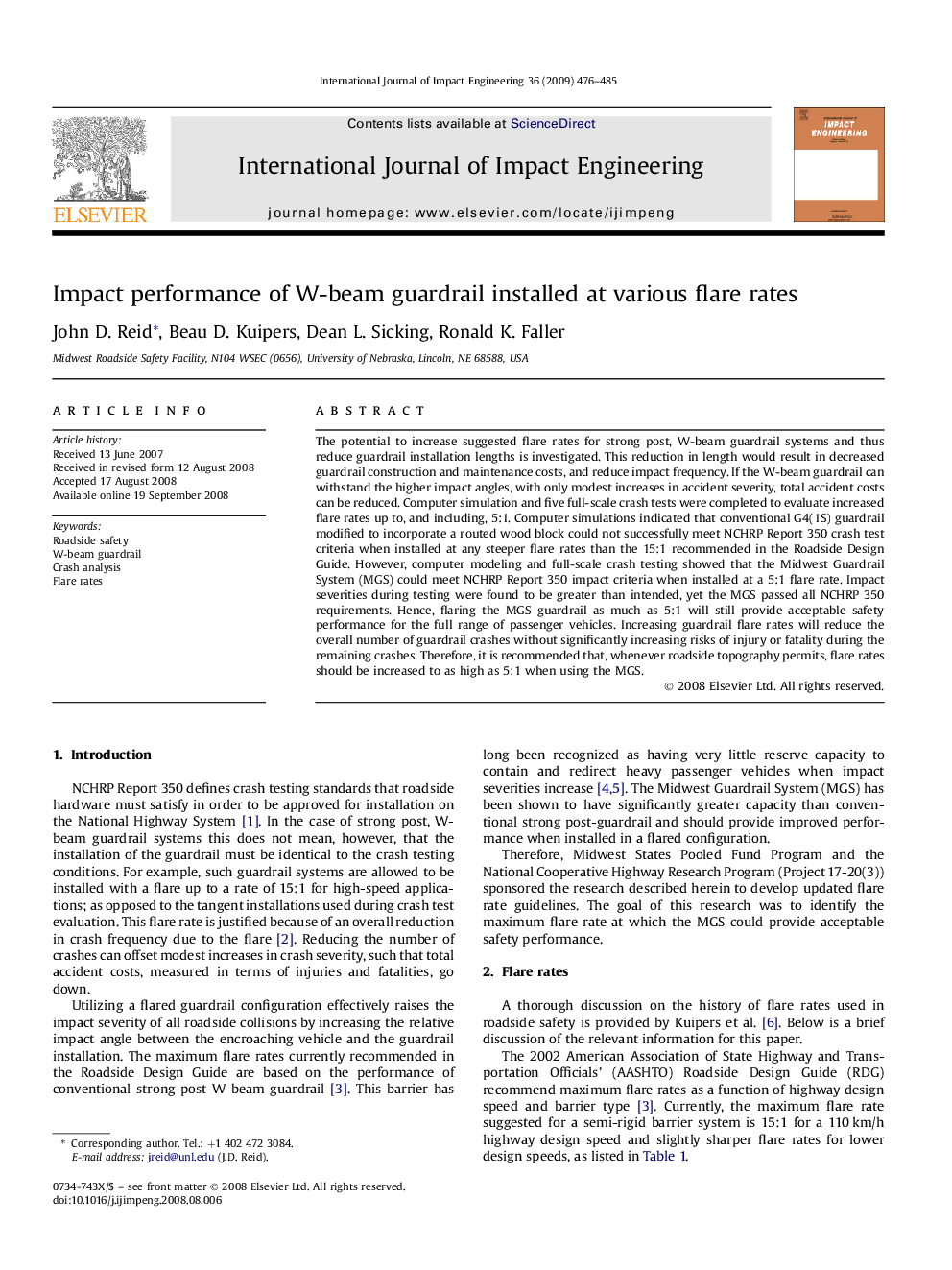| کد مقاله | کد نشریه | سال انتشار | مقاله انگلیسی | نسخه تمام متن |
|---|---|---|---|---|
| 779424 | 1464142 | 2009 | 10 صفحه PDF | دانلود رایگان |

The potential to increase suggested flare rates for strong post, W-beam guardrail systems and thus reduce guardrail installation lengths is investigated. This reduction in length would result in decreased guardrail construction and maintenance costs, and reduce impact frequency. If the W-beam guardrail can withstand the higher impact angles, with only modest increases in accident severity, total accident costs can be reduced. Computer simulation and five full-scale crash tests were completed to evaluate increased flare rates up to, and including, 5:1. Computer simulations indicated that conventional G4(1S) guardrail modified to incorporate a routed wood block could not successfully meet NCHRP Report 350 crash test criteria when installed at any steeper flare rates than the 15:1 recommended in the Roadside Design Guide. However, computer modeling and full-scale crash testing showed that the Midwest Guardrail System (MGS) could meet NCHRP Report 350 impact criteria when installed at a 5:1 flare rate. Impact severities during testing were found to be greater than intended, yet the MGS passed all NCHRP 350 requirements. Hence, flaring the MGS guardrail as much as 5:1 will still provide acceptable safety performance for the full range of passenger vehicles. Increasing guardrail flare rates will reduce the overall number of guardrail crashes without significantly increasing risks of injury or fatality during the remaining crashes. Therefore, it is recommended that, whenever roadside topography permits, flare rates should be increased to as high as 5:1 when using the MGS.
Journal: International Journal of Impact Engineering - Volume 36, Issue 3, March 2009, Pages 476–485